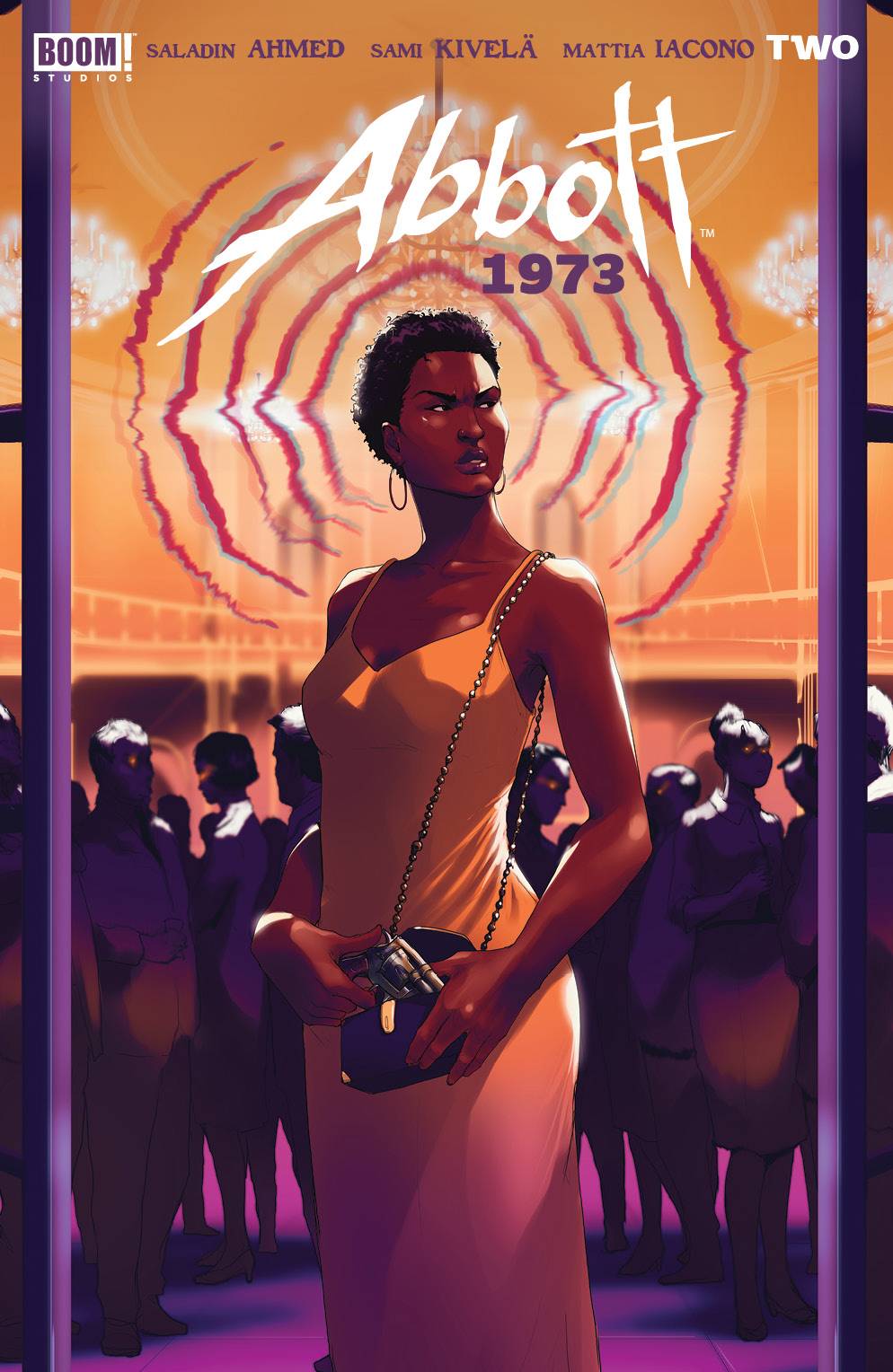

The issue opens with a two-page sequence of the surviving bad guys plotting in a museum at midnight, gathering in the shadows with scenery-chewing dialog about their plans to bring down the Lightbringer. The only downside for me in this issue is the look we get at the cabal of wizards working to bring Abbott down. They work well with the story and are a good match for the style of the first volume. His keen sense of ‘70s fashions brings the setting to life and grounds it in a way that few other comics can match. The team has brought back the stylistic touches of the first volume, with inset panels featuring excerpts of Abbott’s articles as she writes them. As with the original miniseries, Kivelä’s layouts draw the eye and give each page a sense of dynamic energy that boosts Ahmed’s atmospheric writing. Kivelä and new colorist Mattia Iacono are also bringing their talents to bear in this issue. Every character on the page feels like a person with their own thoughts and plans, even if they’re only hinted at.

The book’s recreation of ‘70s Detroit isn’t exactly vibrant, being the heart of the rust belt, but the city has a rhythm and a heartbeat that extends far beyond the central character and her struggles. The characters are a real highlight of the issue, as everyone that Elena meets feels so rich and three-dimensional.

But Ahmed allows for a much messier, and as a result more interesting and grounded-feeling story. A lesser story would have walled these aspects off from one another, perhaps having Abbott disappear into a phone booth when supernatural terrors raise their heads. I love how much depth and consideration Ahmed gives these scenes, and that he spends time considering the complexities of these various struggles. She’s also coming to terms with her bisexuality, and her behavior puts a strain on her relationship with her girlfriend. But he is true to his history, and the unpleasant complexities it represents.Įven when things are looking up, Elena is beset on all sides, both from the forces of the Umbra, but also from more mundane forces like the new owner of her paper, who has strong opinions on what he considers to be ‘ladylike.’ Elena is also processing her trauma from the events of the first story and her responsibilities as a Lightbringer.

It would be easy in this type of story to align the evils in Elena’s life into one monolithic adversary. Listen to the latest episode of our weekly comics podcast!Īhmed puts his focus on the struggle for progress, setting the story in the tumultuous period leading up to the election of Coleman Young, Detroit’s first Black mayor.


 0 kommentar(er)
0 kommentar(er)
